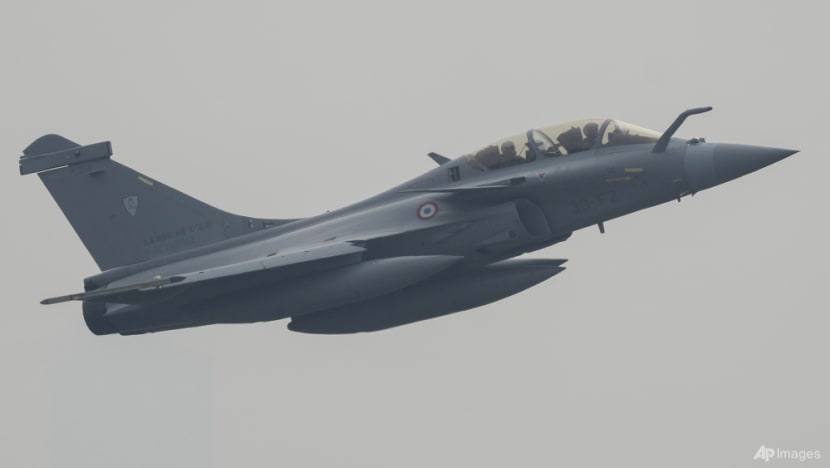Commentary: Indonesia is making big moves to modernise its military – but can it sustain the shift?
SYDNEY: For decades, Indonesia has spent little – by global standards – on its military. And the modest resources available have been mostly directed to the army rather than the navy or air force.
Investments in these latter two services have been sporadic at best, and for a country covering millions of square kilometres of sea and thousands of remote islands, Indonesia has relatively few naval and air capabilities.
The elevation of Prabowo Subianto as Indonesia’s defence minister in 2019 reinvigorated an agenda for acquiring sea and air platforms.
Over his five years as minister, he secured funding for a procurement pipeline of high-end technologies for the air force and navy. The plans have precedents in Indonesian history, but they nonetheless stand out for cost and scale.
Having won last year’s presidential election in Indonesia, Prabowo may prove to offer an unusually long period of continuity in Indonesia’s defence policy. The procurement agenda demands close attention – not only for its relative ambition but also because it begs the question: Does the change in procurement patterns foretell a sustained shift in Indonesia’s strategic posture?
TECH UPGRADES
Jakarta’s order book is eye-catching. At the top of the list are 42 Rafale multi-role combat aircraft (the country’s largest ever arms purchase), two Scorpene submarines, offshore patrol vessels from Italian shipbuilder Fincantieri, five Super Hercules transport aircraft, two A400M transport and aerial refuelling aircraft, anti-ship missiles, and a new radar system for the archipelago.
At a technical level, the new kit offers a marked improvement on what it is replacing.
The Scorpenes, for instance, will outstrip Indonesia’s most recent submarine acquisitions, the Nagapasa-class, on most measures (Prabowo himself singled out the Nagapasa for criticism during the election).
Likewise, the Rafale are a step up from the surplus F-16s the United States acquired during a deal with the Obama administration.
Several shifts in Indonesia’s defence budgeting and procurement processes reinforce the significance of these technological upgrades. Analysts have long highlighted that money spent on wages has crowded out capital investment.
Capital expenditure has however begun to outpace personnel costs in recent years, according to public budget papers. The papers also suggest that the army’s dominance of the budget has been eroded with an increasing share of the budget being allocated to a “modernisation” line item administered by the ministry of defence.

GREATER COHERENCE
Indonesia’s defence ministry has also expanded its role in procurement and planning. The legislative framework allows flexibility in defining military requirements and selecting equipment.
New regulations, however, have squarely asserted the ministry’s primacy over the services in this process. Publicly available regulations show the ministry now directly manages procurement, from initial planning through to supplier negotiations.
Comparative examples correlate strong ministries with successful change in militaries, and the changes may signal greater coherence in Indonesian force planning.
Expanding the procurement pipeline will however remain fiscally challenging. As a share of gross domestic product (GDP), Indonesia’s defence spending has hovered under 1 per cent for several decades, leaving Jakarta well behind other large economies in the region.
This is partly a reflection of the reality that the Indonesian state collects relatively little revenue – as a ratio to GDP it is one of the lowest in the Asia-Pacific. As Indonesia’s finance minister wrote last year, the government has little fiscal room for manoeuvre.
The impact of the planned acquisitions must also be assessed against the low baseline capabilities of the navy and air force.
Some of the F-16s will be approaching four decades of service by the time the Rafale arrive in 2026. The modest fleet of major surface vessels still includes, on paper at least, Dutch vessels built in the 1960s.
It is likely that the combat inventory in critical equipment categories will shrink even as operational demands continue to expand.
FAR FROM SETTLED
Capability also needs more than hardware. It hinges on training, maintenance, interoperability among services and platforms, and defence planning that integrates operational concepts into a cohesive strategic doctrine.
Fielding its new equipment effectively will not be a straightforward task for the Indonesian military, which has historically struggled with siloed services and maintaining high levels of technology.
Prabowo’s success in securing the resources for these major investments is a reminder that Indonesia’s traditional focus on internal threats and land-centric forces is far from settled.
The external pressures pushing Jakarta to pursue even modest naval and air power to allow it to assert sovereignty over Indonesia’s seas and skies are unlikely to fade. While over the past decade the response to these pressures has been uneven, the figure who has driven the most consequential changes towards building sea and air power now occupies the presidency.
Whether Indonesia aspires to build maritime and air power is becoming a less contested question than when Jakarta will be able to marshal the resources to pursue that strategy.
Monty Pounder is a PhD candidate in the Department of Political and Social Change at ANU’s Coral Bell School where he is studying under a Sir Roland Wilson Scholarship. This commentary first appeared on Lowy Institute’s blog, The Interpreter.
Disclaimer: Investing carries risk. This is not financial advice. The above content should not be regarded as an offer, recommendation, or solicitation on acquiring or disposing of any financial products, any associated discussions, comments, or posts by author or other users should not be considered as such either. It is solely for general information purpose only, which does not consider your own investment objectives, financial situations or needs. TTM assumes no responsibility or warranty for the accuracy and completeness of the information, investors should do their own research and may seek professional advice before investing.
Most Discussed
- 1
- 2
- 3
- 4
- 5
- 6
- 7
- 8
- 9
- 10